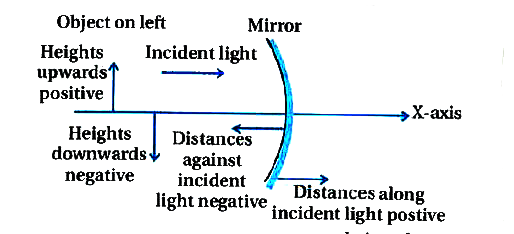Text Solution
Verified by Experts
|
Topper's Solved these Questions
RAY OPTICS AND OPTICAL INSTRUMENTS
KUMAR PRAKASHAN|Exercise SECTION - A (TRY YOURSELF)|74 VideosView PlaylistRAY OPTICS AND OPTICAL INSTRUMENTS
KUMAR PRAKASHAN|Exercise SECTION-B (NUMERICALS)(NUMERICAL FROM TEXTUAL ILLUSTRATIONS)|17 VideosView PlaylistMOVING CHARGES AND MAGNETISM
KUMAR PRAKASHAN|Exercise SECTION D (MCQs ASKED IN COMPETITIVE EXAMS)|34 VideosView PlaylistSAMPLE QUESTION PAPER
KUMAR PRAKASHAN|Exercise PART-B SECTION-C|5 VideosView Playlist
Similar Questions
Explore conceptually related problems
Knowledge Check
Similar Questions
Explore conceptually related problems
KUMAR PRAKASHAN-RAY OPTICS AND OPTICAL INSTRUMENTS-SECTION-D (MULTIPLE CHOICE QUESTIONS (MCQs))(MCQs ASKED IN COMPETITIVE EXAMS)
- Discuss sign convention of distances for reflection by spherical mirro...
04:30
|
Playing Now - Which of the following is used in optical fibres ?
01:15
|
Play - An astronomical telescope has a large aperture to ….. .
02:22
|
Play - If two mirrors are kept at 60^@ to each other, then the number of imag...
01:13
|
Play - As shown in figure, a plano-convex lens of focal length 20 cm is silve...
02:44
|
Play - A light ray is incident perpendicular to one face of a 90^@ prism and ...
02:52
|
Play - A plano- convex lens of refractive index 1.5 and radius of curvature 3...
03:09
|
Play - The refractive index of transparent cylindrical rod is (2)/(root3) . A...
04:50
|
Play - A fish looking up through the water sees the outside world, contained ...
05:36
|
Play - Two point white dots are 1 mm apart on a black paper. They are viewed ...
02:45
|
Play - A thin glass (refractive index 1.5) lens has optical power of - 5D in ...
05:25
|
Play - The refractive index of glass is 1.520 for red light and 1.525 for blu...
02:13
|
Play - Two lenses of power - 15D and + 5D are in contact with each other. The...
01:53
|
Play - When monochromatic red light is used instead of blue light in a convex...
02:38
|
Play - A beaker contains water up to a height h(1) and kerosene of height h(2...
02:25
|
Play - Diameter of a plano-convex lens is 6 cm and thickness at the centre is...
05:03
|
Play - A green light is incident from the water to the air-water interface at...
03:25
|
Play - Monochromatic light is incident on a glass prism of angle A. If the re...
05:52
|
Play - On a hot summer night, the refractive index of air is smallest near th...
03:56
|
Play - An observer looks at a distant tree of height 10 m with a telescope of...
01:59
|
Play - A diverging lens with magnitude of focal length 25 cm is placed at a d...
03:32
|
Play




